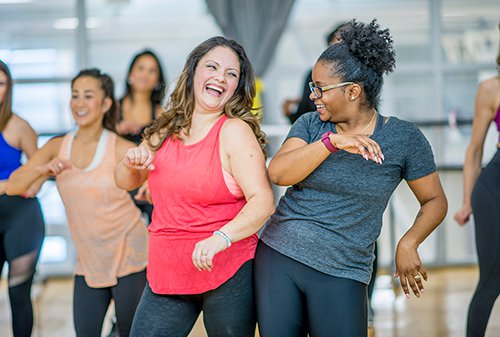
At the beginning of any new year, a lot of us set goals to achieve in the days, weeks, and months ahead. But, did you know that one of the most popular New Year’s resolutions can also positively impact your surgical experience?
While getting in shape can seem like a tough plan to stick with, putting in the work
preoperatively is definitely worth it when it comes to your well-being during surgery and
recovery.
Being in good physical condition can decrease the risk of complications during and after surgery. Your body has to work hard to withstand surgery and to heal afterward, so increasing your fitness level helps this take place safely and effectively.
In her writing about DIEP reconstruction, our patient Shirley explained how beneficial it was for her to be in good shape before surgery. This turned out to be really helpful in the days following her surgery because of the extra strength she realized she needed to do normal activities.
“Statistics aside, I cannot stress how much being in shape helped…,” she wrote. “Just getting out of the hospital bed requires A LOT of leg strength.” Along with these practical benefits, continuing her fitness plan before surgery also helped her stay on track afterward to sustain and appreciate her new body! To read more about Shirley’s reconstructive journey, click here.
Finding the right thing for you
While we do know that exercise can often feel more like a burden than a benefit, you can change your outlook on working out by doing what makes you feel good! Everyone enjoys different activities and finding the kind of exercise you enjoy is the best way to start and stick with a fitness routine. Our team at the Center for Natural Breast Reconstruction has some great ways that they get in shape and have fun doing it!
Our content writer and research assistant Emily loves Zumba, which combines international dance styles with fun music to create an experience that feels more like a party than a workout! After taking classes, she became an instructor because she wanted to share the happiness and excitement of Zumba while giving others an exciting way to get in shape. Zumba isn’t just a fun dance class; it also provides essential health benefits for surgery and recovery, such as promoting heart health, toning and strengthening muscles, and aiding with weight loss. You can find Emily teaching at O2 Fitness in West Ashley, check out their class schedule to catch one of her classes!
If you’re looking for something you can do from the comfort of your own home, Zumba and other fitness programs offer virtual classes. Audrey, our physician assistant, uses Peloton to work out in a class setting from home. With Peloton, they are able to join virtual classes together and have a convenient and motivating way to exercise safely. They have even been able to start doing these cycling classes (and many more!) with our patient Joan, providing them with a full body workout, including important areas used after surgery like the core, back, and legs.
Heading outside can also be a great way to change up a normal exercise routine. Running with her favorite playlist is our medical assistant Nikki’s favorite workout, providing a fitness routine that strengthens leg muscles and joints.
Fitness is always essential for your overall well-being, and it is especially vital when you are getting ready for surgery. When beginning a fitness plan, it is important to choose a routine that is safe, beneficial, and enjoyable for you. Starting slowly and building up gradually with a workout that is correct for your fitness level helps you achieve your goals and prevent injury.
Remember to not get discouraged, celebrate your little victories, and always be proud of your hard work!
